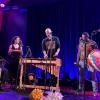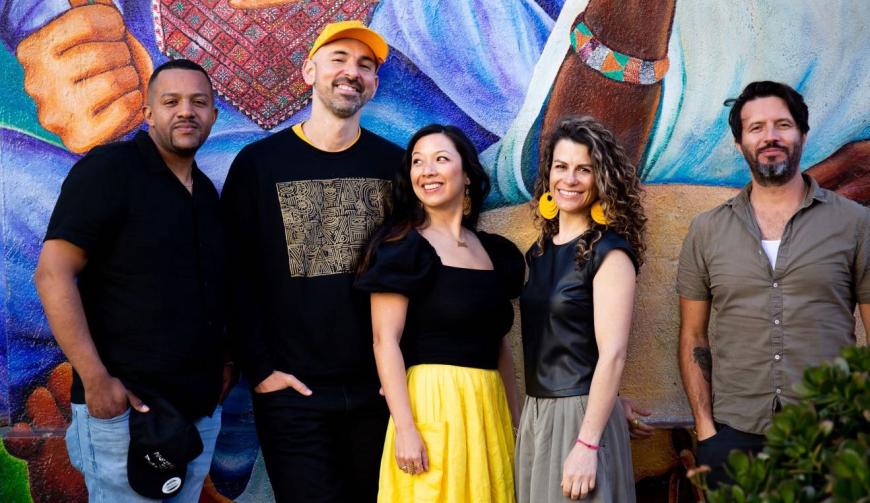
Pin the schedule for this year’s San Francisco International Arts Festival (SFIAF) to a wall and throw a dart at it, and you’ll very likely hit an intriguing performance.
Want to celebrate AAPI (Asian American and Pacific Islander) Heritage Month? The Pandan Leaf Collective has you covered with its free-with-RSVP concert on May 9, “Until Now: The Women Who Shape Us,” a series of tales from Asian American feminist singer-songwriters. Ever experienced the joy of Balkan brass music? Fanfare Zambaleta offers up its brand of “crazy street party music” at another free-with-RSVP event on May 5. And take a trip toward the equator with Neblinas del Pacífico, which shares rich Afro-Colombian musical traditions on May 4.
Presented in the Mission District from May 1–12, the 2024 edition of SFIAF includes music, dance, theater, and other events from both international and local artists. Founded in 2002 and produced annually in the Mission until 2008, the festival moved to venues at Fort Mason from 2009–2019, returning to its Mission District roots in 2023.
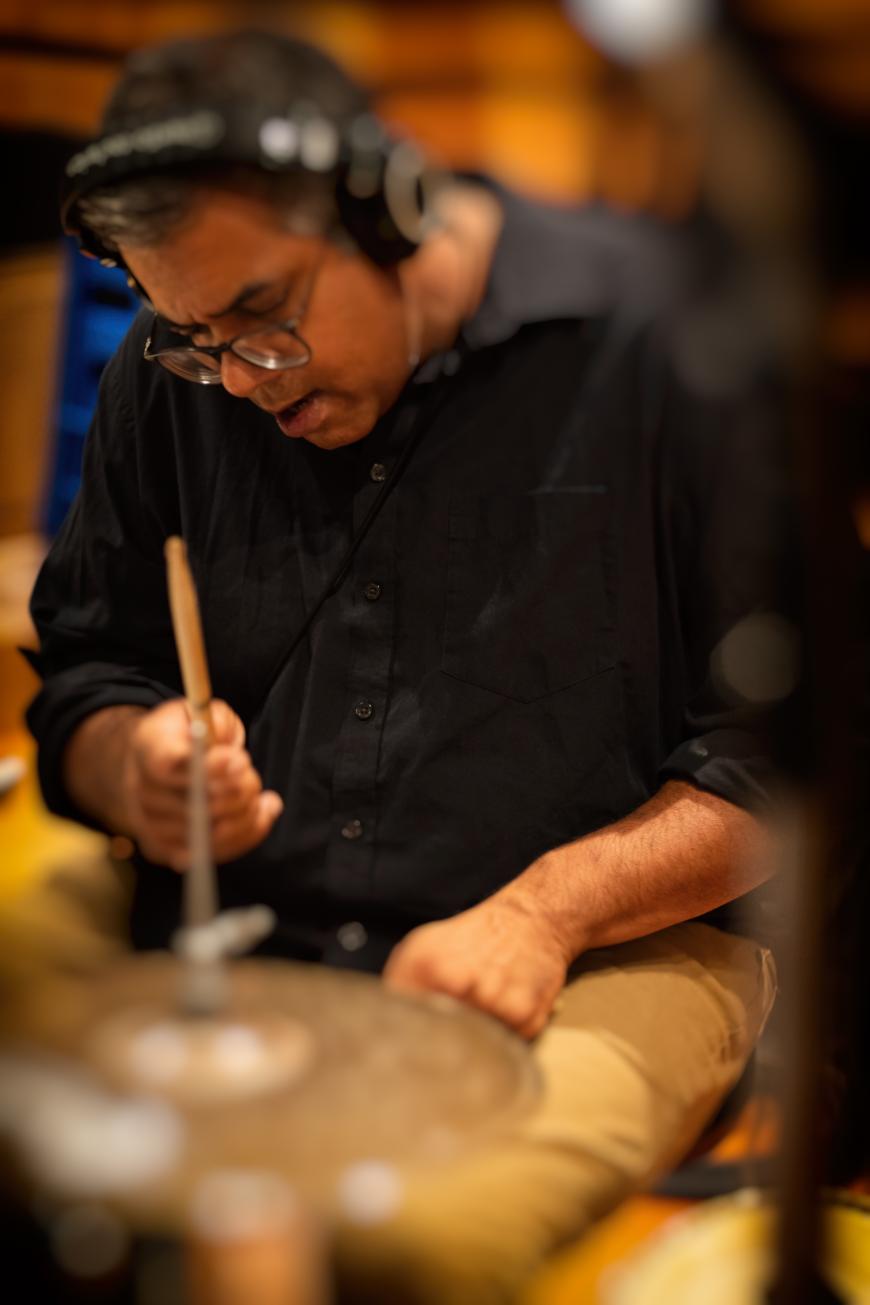
“Creative artists, who were impacted so much by the pandemic, and our presenters continue to be excited to bring things out to people again,” says drummer and tabla player Sameer Gupta, who’s on this year’s SFIAF lineup. “And I feel like when you have a neighborhood-based festival like this, it brings attention to the fact that there’s a larger community of us to connect with through so much diverse programming.”
The all-star group VidyA, featuring Gupta, tenor saxophonist and bandleader Prasant Radhakrishnan, and double bassist David Ewell, plays on May 4. They explore Indian Carnatic music through the sax trio instrumentation pioneered by jazz legend Sonny Rollins, an approach Gupta and his collaborators have dubbed Carnatic jazz. They seem like ideal musical ambassadors for SFIAF’s mission to “focus on increasing awareness and understanding within and across cultures.”
“I came into Indian music later,” Gupta reflects, by phone from his home in Oakland. “I look at everything from a jazz lens and a drum-set perspective and have always centered Black American music in the context of my exploration of Indian music.”
VidyA was active in the Bay Area from 2005 until Gupta moved to New York in 2010 and worked extensively with Brooklyn Raga Massive. He returned to the East Bay about eight months ago and has enjoyed reuniting with his VidyA bandmates.
“The project stayed present but not really active while I was out [in New York],” he says. “Now we’re revisiting all of that repertoire, which has been really cool. Those are very involved, complicated songs that are coming out of South Indian classical music.
“It took a lot of hours and a couple of years to learn to the point where we could do justice to it,” he continues. “So it’s really great be back in the saddle with it and from such a different place, musically, some 13 years later.”
Mykalle Bielinski represents another side of the SFIAF aesthetic. The Quebec resident and multidisciplinary artist has never been to California, let alone San Francisco, and will be making up for lost time with her “eco-responsible” show Warm Up May 2–4. “I’m very excited about that,” she says, when asked about making her first trip to the Golden State as both a performer and visitor.
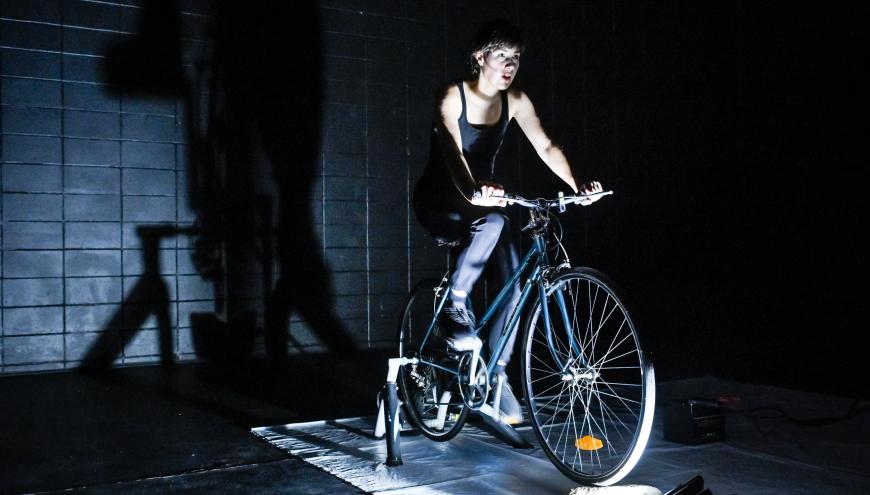
SFIAF founder and Executive Director Andrew Wood partnered Bielinski, whose show will be self-powered by a stationary bike setup, with the San Francisco Bicycle Coalition. She and SFBike will embark on a members-only two-hour “Art and Climate Ride” on May 5 across the Embarcadero, “from Cupid’s Span to the Wave Organ.” She’s also hoping to visit a national park while she’s out here.
“San Francisco is known as a really progressive city, very liberal and green,” Bielinski shares, in a Zoom interview from her home in Longueuil. “I’m looking forward to exploring and learning more about it.”
The hourlong Warm Up has Bielinski singing and performing while pedaling. Any part of the performance is a strenuous enough activity on its own, of course. “It’s a very performative piece,” she explains. “It starts with a challenge to produce my own electricity with my body while biking and pedaling to try to make a show. I think it’s curious for the audience to watch this and to connect the process to natural resources and electricity.
“I do electronic music, and I like to sing in a microphone. So I have to power those,” she adds. “It can be shocking but also revealing to see the energy being produced and realize what it costs to make. But it can be really spiritual, too. I do it with a lot of warmth. I say that I’m very welcoming, and I do it with a soft touch.”
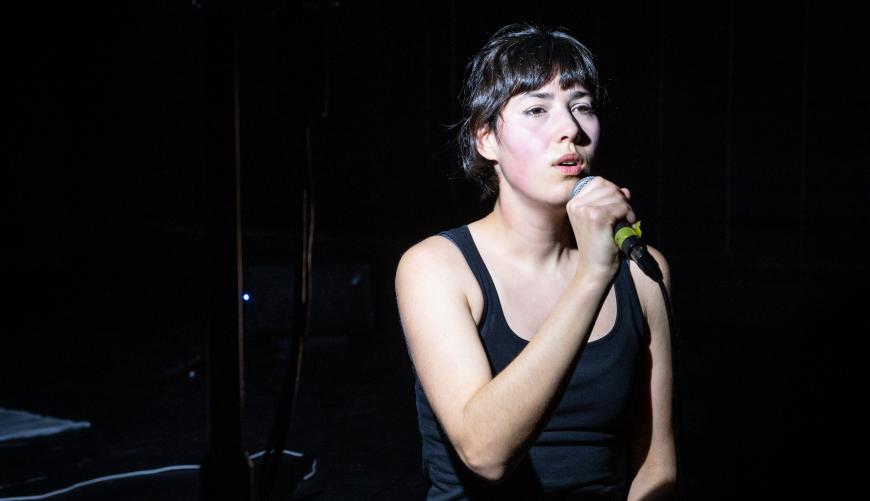
Asked whether she has a core artistic discipline, Bielinski answers in a way that further reflects SFIAF’s own open-door philosophy: “I studied theater, I studied acting, so I studied performance. But I’ve been always a musician,” she says. “I really intertwine [disciplines] in my practice. It’s very hard to distinguish them because I wouldn’t do theater without music. And the opposite is also true.”
Wood discovered Bielinski and Warm Up while attending a biannual performing arts showcase in Quebec. “Andrew is really an enthusiast,” she reports, with a laugh. “I think he went to see my showcase two times and then told me, ‘Oh my god, this is super-great for our festival.’”
SF Classical Voice had a nearly hourlong phone conversation with Wood. He discussed his programming philosophy, the broad ears of Bay Area audiences, and the influence a neighborhood can have. The following excerpts from the interview were edited for clarity and brevity.
The breadth of SFIAF’s offerings continue to be impressively diverse. How do you approach booking?
We generally present international artists that do not have U.S. representation. The Kassandra Production from Denmark is making its U.S. debut [May 1–4], as is Mykalle from Canada.
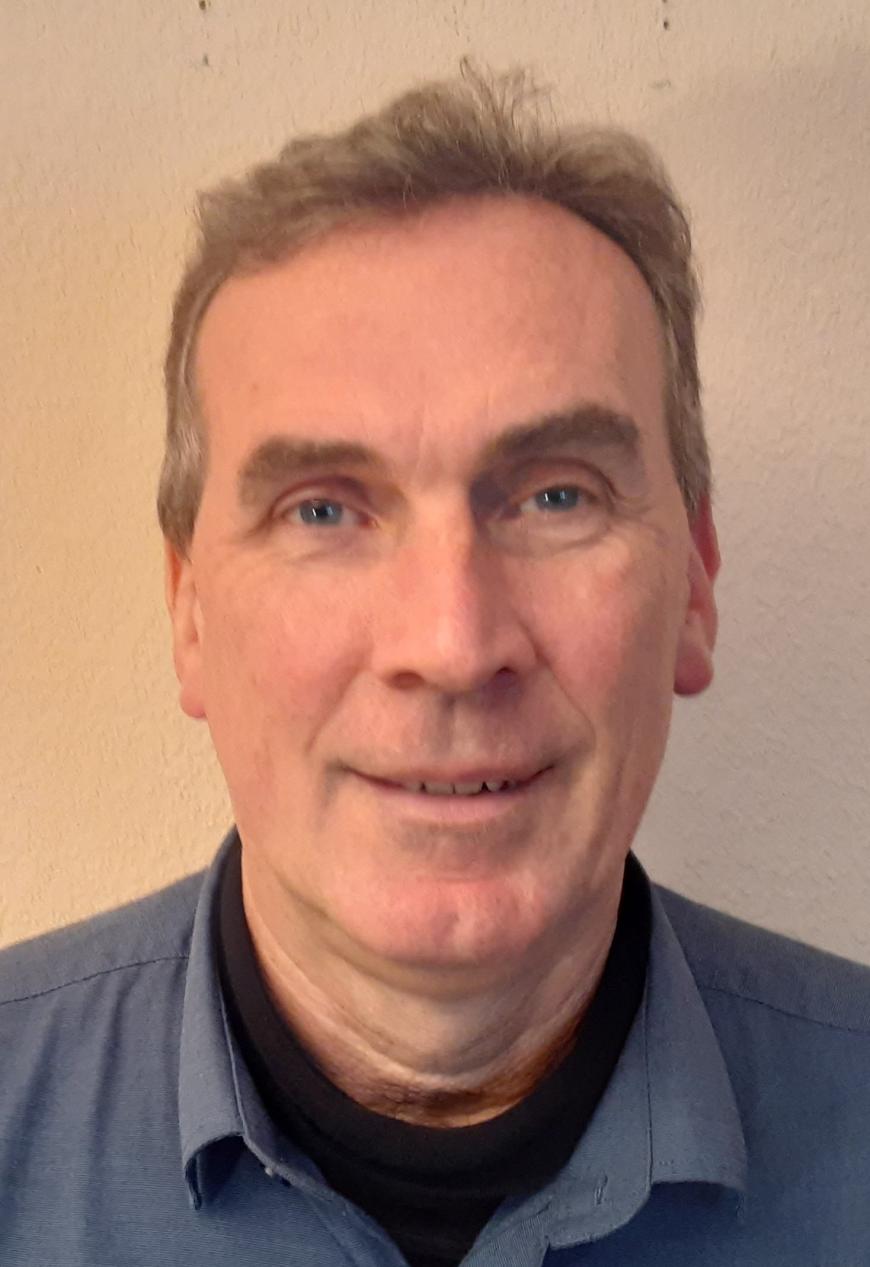
What’s your criteria when you book?
When you’re bringing these folks in, you have to ask yourself if there are San Franciscans who do it better than them. So they have to be incredibly good or have a really original idea. And we’ll do something that’s really about their parts of the world, as far as communicating something about where they come from.
Over the last 20 years, we’ve had artists from more than 60 different countries. We’ve also presented hundreds of artists from local communities.
And what’s the next step in the programming process?
Programming is kind of like an ice carving; the public sees the bits that are left. We always apply to the National Endowment for the Arts. There are country-specific funds as well, like ones from The Ireland Funds, the Danish Ministry of Culture, and the Canada Council for the Arts. In the end, it always comes down to “Are they available? Can we afford them? And is there funding for them?”
Whichever artists actually come, there’s usually some type of correlation to the festival’s ideas and theme and sometimes to the other artists that are there as well. [This year’s theme is “In Diaspora: I.D. for the New Majority.”] And then there are around 45 to 50 local artists, too.
Connections are sometimes made between artists. It can be serious, like the subject of mental health. But other times it’s really wacky. We have two different groups doing work related to Elvis Presley this year, for example [Joe Landini Dance’s Freddie vs. Elvis May 3–4 and Fishamble: The New Play Company’s KING May 8–11].
Given the Bay Area’s broad demographics, you must have a lot of specific cultural communities to draw from in terms of audiences.
There are so many different ones. Whichever country we’re bringing artists in from, there’s always a local population with ties to it. And they’ve always come out.
There’s also quite a strong consular corps here — about a dozen full consulates, plus a lot of honorary ones. They reach out to the people from those places, too.
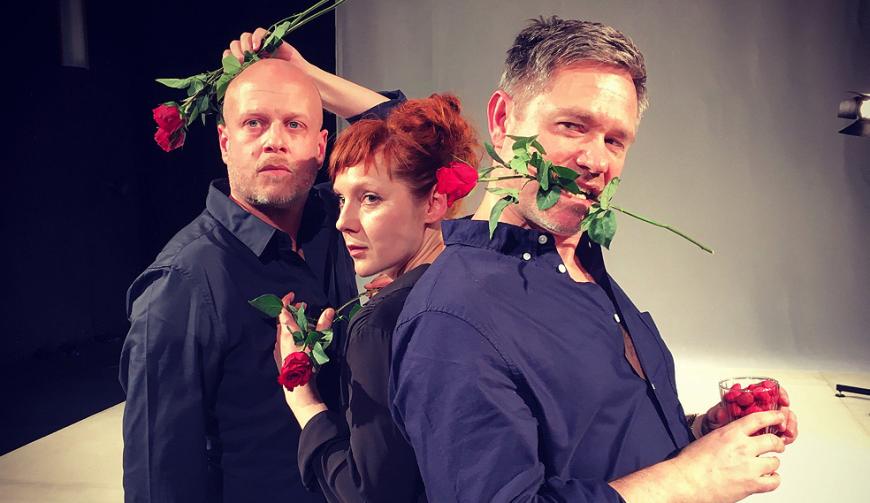
Some artists have individual connections. Annika B. Lewis, who is the artistic director of Kassandra Production, was actually born in San Francisco. So some of her family is here. And her project (The Soul Catcher — Unmasking the Modern Predator) is about narcissistic personality disorder. We’ve been reaching out to all these different psychiatrists and psychologists to get them to come and bring groups of people. A lot of universities have psychology departments, and we’ve been working with some of those schools, too.
Have there been any “ones that got away” due to logistics?
West Oakland to West Africa has a great approach [to making difficult logistics work]. They’re doing a live Zoom [on May 4] with artists in Ghana and Kenya and Nigeria. They’re doing it as a brunch and starting at 11:00 a.m. since we’re nine hours or so ahead of them there.
Finally, any thoughts on being back in the Mission for the second year in a row?
We asked ourselves, “How do we do something that helps define the neighborhood for one short period of time?” All the things that are good about San Francisco in general, we can manifest that through the festival, be it art, politics, or our worldview.
I think that for other parts of the world, they still see San Francisco as a shining city. And I think art really shows the city off as the best it can possibly be. We can show what a multicultural democracy looks like in its best form. And that’s an aspirational thing.


